The History and Evolution of Materials Science and Engineering at the University of Maryland
Background
Materials Science and Engineering (MSE) is arguably the oldest of the engineering disciplines – with the first known example of processing a material to change its structure and thus its properties estimated at 28,000 BC when the first ceramics were fired in Persia – however, the origins of the MSE Department at University of Maryland are relatively recent. The roots of MSE at the UMD date back approximately to 1950, and evolved through a series of programs and Departments into its present format in 2002. The details of this evolution follow.
Metallurgy Program Era (1950-1962)
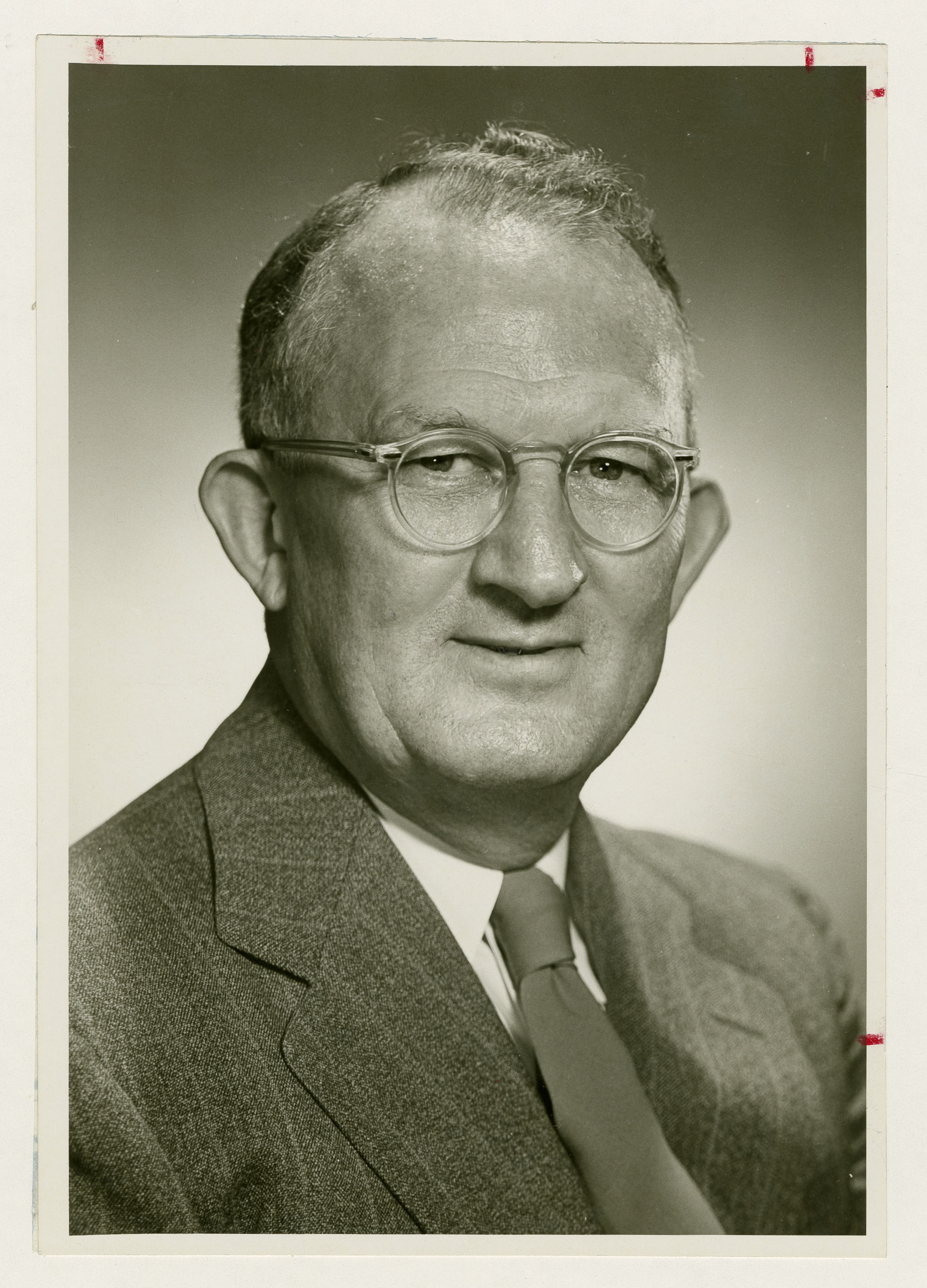 Materials Science and Engineering (MSE) at the University of Maryland (UMD) grew out of the metallurgy curriculum within the department of Chemical Engineering, which began roughly in 1950-1951 with the arrival of Eugene P. Klier and William A. Pennington (pictured left). Dr. Klier arrived as an Associate Professor from Penn State University, after completing a PhD in Metallurgy at Notre Dame in 1944. His research was in transformations in alloys, including steels. He left the UMD for a position at Syracuse University in 1956. Professor Pennington was an international expert in metallurgy, and became the President of the American Society for Metals (ASM) in 1961. He offered courses in metallurgy at the undergraduate level through the Chemical Engineering Department until 1962. The development of materials science education at Maryland followed the national progression of this discipline in the 1950s, which merged metallurgy with other fields such as ceramic science, polymer science and solid state physics. After over a decade of emphasizing metallurgy courses at Maryland, the materials science concept was adopted following the lead of other Universities such as UCLA and Northwestern as well as GE research laboratories.
Materials Science and Engineering (MSE) at the University of Maryland (UMD) grew out of the metallurgy curriculum within the department of Chemical Engineering, which began roughly in 1950-1951 with the arrival of Eugene P. Klier and William A. Pennington (pictured left). Dr. Klier arrived as an Associate Professor from Penn State University, after completing a PhD in Metallurgy at Notre Dame in 1944. His research was in transformations in alloys, including steels. He left the UMD for a position at Syracuse University in 1956. Professor Pennington was an international expert in metallurgy, and became the President of the American Society for Metals (ASM) in 1961. He offered courses in metallurgy at the undergraduate level through the Chemical Engineering Department until 1962. The development of materials science education at Maryland followed the national progression of this discipline in the 1950s, which merged metallurgy with other fields such as ceramic science, polymer science and solid state physics. After over a decade of emphasizing metallurgy courses at Maryland, the materials science concept was adopted following the lead of other Universities such as UCLA and Northwestern as well as GE research laboratories.
Materials Engineering Program Era (1961-1989)
The early 1960’s saw a rapid expansion in funding for science, largely inspired by the 1957 launch of Sputnik, which led to the creation of both the National Aeronautics and Space Administration (NASA) and the Advanced Research Project Agency (ARPA, the predecessor of the Defense Advanced Research Project Agency or DARPA). The graduate degree program in Materials Engineering at the UMD was created in 1962, as part of the initiative to create the new discipline to be called Materials Science and Engineering through funding by ARPA of Interdisciplinary Laboratories (IDL’s) in Materials Research. The Materials Science Research Centers as stated by ARPA were to “establish an interdisciplinary materials research program and shall furnish the necessary personnel and facilities for the conduct of research in the science of materials.” The University of Maryland was one of the twelve universities to receive ARPA Materials Research IDL grants during the years from 1960-1962, along with Cornell University, the University of Pennsylvania, Northwestern University (all in 1960), Brown University, University of Chicago, Harvard University, Massachusetts Institute of Technology, University of North Carolina, Purdue University, and Stanford University (all in 1961) and the University of Illinois (1962). The Center was initially funded at $912,000 and directed by an interdepartmental committee, headed by Professor Ralph D Myers, a Solid State theorist, and which included Physics Professors Rolfe Glover, Richard Ferrell, and Edward Stern, as well as Dr. Homer Schamp of the Molecular Physics Institute and Professor Ellis Lippincott of Chemistry. A major focus of the research carried out in this center was on superconductivity. In 1968, administration of the ARPA IDL was transferred to the Center for Materials Research, headed by Ellis Lippincott, Department of Chemistry; research proposals were reviewed and awarded to member of the Departments of Chemistry and of Physics, and especially to members of the materials group, thus providing very significant support for their budding research activity. The last Director of the Center was Robert L. Park of the Physics Department (1974-1978).
At the University of Maryland, the Materials Engineering (MatEng) program was formally created in 1962 as part of the “General Engineering B.S. Degree Program”. It was administered by Chemical Engineering and the faculty members affiliated with the program were in the Department of Chemical Engineering as well as Mechanical Engineering. The General Engineering Degree was ABET accredited, but not the program in materials, which received its accreditation at a later date.The Directorship rotated between the members of the Materials Engineering program; they included Professor Ronald Armstrong, who was hired by Mechanical Engineering (ME) at the beginning of the 1968 spring term, and served as the Director of the Engineering Materials Program from 1968-1969. It also included Professor Richard Arsenault, who was hired by Mechanical Engineering in 1967, and subsequently transferred to Chemical Engineering; he directed the program from 1969-1970. Professor M J “John” Marcinkowski was subsequently hired in Mechanical Engineering in the 1970’s. These three professors joined with ME Professor Robert Asimow, and Professors Leonard Skolnick and Pedro Bolsaitis in Chemical Engineering, to teach and conduct research in the Engineering Materials Graduate Program. Three "central facilities" were established during this time: one on mechanical testing supervised by Richard Arsenault; one on electron microscopy supervised by John Marcinkowski with assistant, M.E. (Gene) Taylor; and one on x-ray diffraction supervised by Ronald Armstrong with assistance from A.C. Raghuram and C. Cm. Wu. From 1969 - 1973, the total research article citations for members of the UM Engineering Materials Group were among the top ten most cited.
Professor Ian Spain transferred from the Institute for Molecular Physics to the Materials Engineering Program in Chemical Engineering in 1971 as Director, a position he held until 1978. The program concentrated on mechanical properties of materials with special emphasis on metal matrix composite materials and dislocations in metals, but also on the Chemistry of Materials, mainly through Professor Spain’s influence.
The Program Directorship continued to rotate frequently in later years, with Professor Richard Arsenault in 1979, Professor Ted Smith of Chemical and Nuclear Engineering, an expert in polymers, in 1981, and Dean George Dieter as Acting Director twice: in 1980 and in 1982. In 1982 Professor John Drake Hoffman, an expert in polymers, joined the Engineering Materials program as Director after a long career at NBS/NIST. He left in 1985 to join the Michigan Molecular Institute.
In 1985 Professor Sreeramamurthy Ankem joined the Materials Engineering program, bringing further expertise in the mechanical properties of metal alloys. He received his Ph.D. in Physical Metallurgy from the Polytechnic Institute of New York.
Professor Manfred Wuttig left the Metallurgy Department at the University of Missouri-Rolla to join the Department of Chemical and Nuclear Engineering and become Director of the Materials Engineering Program in 1986. Professor Wuttig’s expertise was in instabilities in alloys and martensitic transitions; he went on to develop the field of multiferroic materials.
In September 1986 the Reliability Engineering Program was launched, consisting of three faculty members from Nuclear Engineering (Marvin Roush, Mohamed Modarres and Ali Mosleh). The Reliability Engineering Program grew from the Nuclear Engineering program and coincided with the Nuclear Regulatory Commission’s need for risk and reliability based licensing of nuclear reactors. It also met a national need for increased reliability in medical devices, space systems and automobiles.
In 1987 Professor Lourdes Salamanca-Riba joined the Materials Program within CNE, bringing with her expertise in the use of transmission electron microscopy in materials characterization. She received her PhD from MIT, working with Mildred Dresselhaus.
In 1989 Professor Isabel Lloyd, whose research was in ceramics joined the Materials program. She had previously been a Visiting Scientist at Army Materials Research Laboratory, and at Naval Research Laboratory, as well as an Assistant Professor at the University of Pittsburgh.
Materials and Nuclear Engineering Era (1989-2002)
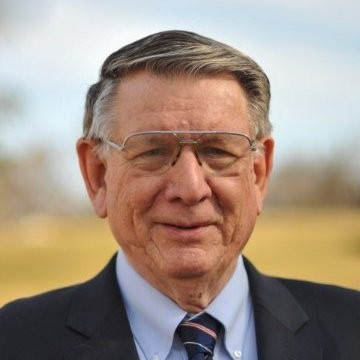 In 1989, the Chemical and Nuclear Engineering Department, chaired by Professor Marvin Roush (right) and the Materials Engineering Program, directed by Professor Manfred Wuttig were reorganized to form the new Department of Materials and Nuclear Engineering (MNE), consisting of 13 Faculty, which also coincided with the formation of a separate Chemical Engineering Department. Frank Munno, who had joined the Nuclear Engineering Program in Chemical Engineering in 1957, was chosen as its first Chair, but stepped down soon thereafter, and Professor Wuttig became Interim Chair of MNE. Other Faculty included Joseph Silverman, Yih-Yun Hsu, Richard Arsenault, Mohammed Modarres, Sreeramurthy Ankem, Lourdes Salamanca-Riba, Gary Pertmer, Kazys Almenas, Ali Mosleh and Isabel Lloyd. Two undergraduate majors (materials engineering and nuclear engineering) and three graduate programs (materials engineering, nuclear engineering and reliability engineering) were combined to form this new department.
In 1989, the Chemical and Nuclear Engineering Department, chaired by Professor Marvin Roush (right) and the Materials Engineering Program, directed by Professor Manfred Wuttig were reorganized to form the new Department of Materials and Nuclear Engineering (MNE), consisting of 13 Faculty, which also coincided with the formation of a separate Chemical Engineering Department. Frank Munno, who had joined the Nuclear Engineering Program in Chemical Engineering in 1957, was chosen as its first Chair, but stepped down soon thereafter, and Professor Wuttig became Interim Chair of MNE. Other Faculty included Joseph Silverman, Yih-Yun Hsu, Richard Arsenault, Mohammed Modarres, Sreeramurthy Ankem, Lourdes Salamanca-Riba, Gary Pertmer, Kazys Almenas, Ali Mosleh and Isabel Lloyd. Two undergraduate majors (materials engineering and nuclear engineering) and three graduate programs (materials engineering, nuclear engineering and reliability engineering) were combined to form this new department.
During 1990 Alexander Roytburd, a theorist working on the thermodynamics of strain driven phase transitions and ferroelectrics, and who maintained a joint appointment at the National Institute of Standards and Technology (NIST) was hired as Professor in MNE.
In 1992 five new faculty were added to the Department. Robert Briber, who had been a NIST research scientist working on polymer characterization using neutron and X-ray scattering joined the MNE Department as an Assistant Professor, beginning the program in soft materials, along with a strong program in neutron scattering. In that same year, the College of Textiles and Consumer Economics was closed by the Campus and 4 faculty members were transferred into Materials and Nuclear Engineering Department and more specifically into the Materials Engineering Program. These faculty included: Betty Smith (who retired in 1994 or 1995), Kwan-nan Yeh (who retired in 2000), Behnan Phourdahemi (who left for a position at NC State in 1996), and Professor Ira Block (who retired in the late 1990’s).
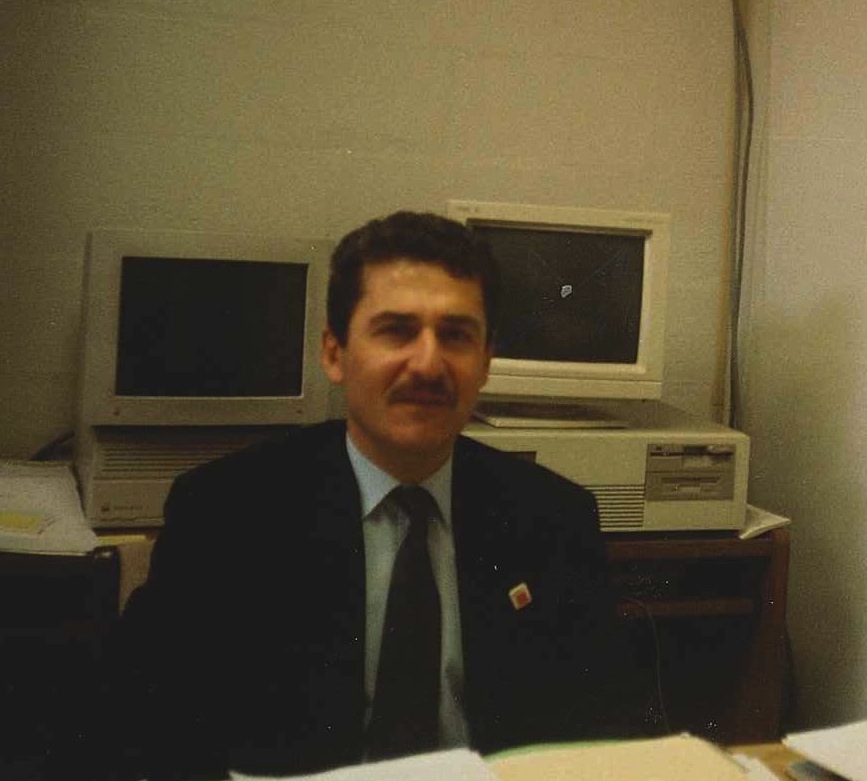 On July 1 1993, Professor Aris Christou (left) was appointed as Chair of the Materials and Nuclear Engineering Department. Professor Christou had joined the Department of Mechanical Engineering in 1990 and earlier served as Branch Head of Surface Physics at the Naval Research Laboratory.
On July 1 1993, Professor Aris Christou (left) was appointed as Chair of the Materials and Nuclear Engineering Department. Professor Christou had joined the Department of Mechanical Engineering in 1990 and earlier served as Branch Head of Surface Physics at the Naval Research Laboratory.
In 1995 two new faculty were hired in MNE. Professor Ramamoorthy Ramesh, who had been a researcher specializing in complex oxides, including piezoelectrics, as well as in electron microscopy at Bellcore Labs joined the MNE department. Professor Ramesh would go on to lead one of the interdisciplinary research groups in the University of Maryland’s NSF-Materials Research and Engineering Center (MRSEC) in 1996. Luz Martinez-Miranda was hired as an Assistant Professor; her research was in liquid crystals and in materials characterization using x-ray scattering and x-ray diffraction. In December of that year Materials Science and Engineering became a new B.S. degree program, approved by the Maryland Higher Education Board.
In 1996 four new faculty were hired in MNE. Professor Gary Rubloff, a thin films expert from North Carolina State University, and earlier from IBM joined the MNE Department, and became Director of the Institute for Systems Research (ISR). He would go on to become the founding Director of the UMD Nanocenter in 2004, and of a DOE Energy Frontiers Research Center in 2009. Professor Mirela Gavrilas was hired as an Assistant Professor in the Nuclear Engineering Program. Professor Peter Kofinas, (presently Chair of the Chemical and Biomolecular Engineering Department) was hired to strengthen the program in soft materials, while Professor Otto Wilson (now at Catholic University) was hired to increase the Department’s presence in biomaterials.
In 1998 John Kidder was hired as an Assistant Professor in MNE. His research was in Chemical vapor deposition of oxides, and he ran the laboratory for advanced materials processing. He left for a position at Vermont Technical University in 2002.
In 1999 Ichiro Takeuchi, whose research was in superconductivity and scanning microwave microscopy joined the Department as an Assistant Professor after a postdoc at Lawrence Berkeley National Laboratory. He received his PhD from the Physics Department at the UM, working with T. Venketessan. He would go on to develop the programs in combinatorial materials discovery, in elastocaloric materials and in machine learning in the Department. In spring of that same year, the first B.S. degrees in MSE were given. In fall of 1999, the first ABET accreditation for the MSE program within MNE was successfully achieved with no deficiencies.
In 2000 two new faculty were hired. Professor Gottlieb Oehrlein, a leading expert in plasma processing of materials, came to MNE from SUNY-Albany, after a distinguished career at IBM. Ray Phaneuf, whose research was in surface physics and in scanning probe and low energy electron microscopy, joined MNE from Physics and the Laboratory for Physical Sciences where he had been since arriving from the University of Wisconsin-Madison in 1985.
Between 1996 and 2003, the MSE played a leadership role in the following centers: the University of Maryland NSF-MRSEC (R. Ramesh Associate Director, E William (Physics) Director), NSF-COEDIP, UIRCRC (A Christou, Director), NASA-Photonics-LIDAR Center and the Risk and Reliability Center. The first clean room facility in the College was built in the JM Patterson building, and an additional NASA-UMD clean room for space materials built in the Myer’s Building adjacent to the College Park airport, and to the Laboratory for Physical Sciences.
Materials Science and Engineering Era (2003-present)
During the fall of 2002, the college PCC, and campus PCC committees approved the reorganization of the department into the Materials Science and Engineering Department, with the Reliability program (including Professors Marvin Roush, Mohamed Modarres, Ali Mosleh, Joseph Bernstein, Carol Smidt and Michel Cukier, who had just joined MNE) and Nuclear program (which included Lothar Wolf, Mirela Gavrilas and Gary Pertmer) transferred to Mechanical Engineering; Wolf retired shortly thereafter, while Gavrilas took a position at the NRC. The Faculty Senate gave the final approval during December 2002 and the new Department started its operations during spring of 2003. As a result of the reorganization the B.S. degree program in Nuclear Engineering was terminated.
In mid-2003, Professor Christou was the named as the first Chair of the new MSE Department. During Christou’s tenure as Chair, the MSE Department expanded significantly; the new department reached a U.S. News and World Report ranking of 25 among national Materials Science and Engineering Departments and Programs.
Robert Briber became Chair of the recently reorganized MSE Department on July 1, 2003. At that time there were 13 faculty in the Department: Robert Briber, Mohamad Al-Sheikhly, Rama Ankem, Aris Christou, Isabel Lloyd, Luz Martinez-Miranda, Gottleib Oehrlein, Ray Phaneuf, Ramamoorthy Ramesh, Alex Roytburd, Gary Rubloff, Lourdes Salamanca-Riba, Ichiro Takeuchi and Manfred Wuttig. With a new name and mission focused the on field of materials science and engineering the department embarked on a goal of growing the educational and research programs. A major focus for research in MSE by this time was nanotechnology.
Professors Takeuchi, Rubloff and Williams (physics) were awarded a $750K grant from the Keck Foundation to establish the Keck Lab for Combinatorial Nanosynthesis and Multiscale Characterization. This facility included a new pulsed laser deposition system located in the recently opened Jeong H. Kim Engineering building.
In October 2004 the Deans of the Colleges of the A. James Clark School of Engineering, the Computer Mathematical and Physical Sciences and the College of Life Sciences announced the formation of the Maryland NanoCenter to oversee the facilities in the Kim Engineering building including the FabLab clean room and the Nanoscale Imaging, Spectroscopy and Properties Lab for electron microscopy (now the AIM Lab). MSE Professor Gary Rubloff was the founding director of the NanoCenter which was administered by the Institute of Research in Electronics and Applied Physics (IREAP). During the same time period, two new transmission electron microscopes (TEM) were installed in the NISP Lab, a JEOL 2100F high resolution field emission TEM and a general purpose LaB6 JEOL 2100 TEM. In July 2006 the Maryland General Assembly approved $3.65 million in funding for the Maryland NanoCenter, drawn from the state’s “Sunny Day Fund” and former Maryland Governor Robert Erlich’s nanotechnology initiative. The money was used to purchase major capital equipment and associated support equipment for the FabLab. MSE instituted an interdisciplinary minor in nanoscience and technology, coordinated by Professor Phaneuf.
In 2004, Ramamoorthy Ramesh was named as a Distinguished University Professor. He departed for the MSE Department at Berkeley despite a strong effort from the University to retain him at Maryland.
The undergraduate enrollment in the B.S. MSE program remained relatively low from 2003 through 2008 at about 35 students. In 2009 the Department saw a steady increase in the undergraduate enrollment due to an enhanced recruiting effort by the faculty with a series of open houses for high school seniors in the fall and spring semesters. Over the next 5-6 years the undergraduate student MSE majors grew to about 140 students in the program. The MSE undergraduate educational program was reviewed by external evaluators from ABET in Fall of 2005, 2011, 2017 and was successfully re-accredited each time with no deficiencies or weaknesses in the program.
In 2005 the MSE and Chemical Engineering Department reorganized their staff and combined the two separate business offices into a single unit to better serve both Departments.
In August 2005 Dr. John Cumings joined the MSE Department as an assistant professor with an expertise in electron microscopy and nanotechnology. Prior to arriving at UMD, Dr. Cumings was a postdoctoral scholar in the Department of Physics at Stanford University. He received his Ph.D. in physics from the University of California, Berkeley.
Dr. Joonil Seog joined the MSE Department in August 2006 as an assistant professor with a joint appointment in the Bioengineering Department. Dr. Seog’s expertise has expertise in the areas of biomaterials and nanoscale structural characterization of biomolecules. Dr. Seog was a postdoctoral scholar at the Harvard Medical School and received his Ph.D. in Mechanical Engineering and the Polymer Science and Technology program at MIT. In 2015 Dr. Seog left the university to join the Food and Drug Administration as a materials engineer and is now a scientific research officer at the National Institutes of Health.
In August 2007 Dr. Oded Rabin joined the MSE Department with a joint appointment in IREAP. Dr. Rabin’s expertise is in the synthesis and physical properties of nanowires and porous thin films and electrical, optical and thermal transport in low dimensional systems. Prior to arriving at UMD was a postdoctoral researcher at University of California, Berkeley and the Harvard Medical School. Dr. Rabin received his Ph.D. in physical chemistry from MIT.
By this time materials for energy harvesting and storage was becoming the new focus of the Department. Professor Eric Wachsman joined the MSE Department in July 2009 as the William L. Crentz Centennial Chair in Energy Research and later (2017) the Director of the University of Maryland Energy Research Center (UMERC, now the Maryland Energy Innovation Institute, MEII). Dr. Wachsman has a joint appointment in the Chemical and Biomolecular Engineering Department. Professor Wachsman’s expertise is in ceramics materials and electrochemistry with applications to fuel cells, batteries, sensor and other applications. Prior to his appointment as the Director of UMERC, Dr. Waschsman was the Rhines Chair Professor in Materials Science and Engineering and Director of the Florida Institute for Sustainable Energy at the University of Florida.
In August 2011 Dr. Liangbing Hu joined the MSE Department and as a member of the recently formed University of Maryland Energy Research Center. Dr. Hu’s expertise was in nanomaterials and cellulose based materials. Before starting his faculty appointment at UMD, Dr. Hu was a postdoctoral researcher at the University of California, Berkeley and a founding research scientist at Unidym Inc. Dr. Hu received his Ph.D. in physics from UCLA.
Dr. Marina Leite joined the Department in August 2013 with a joint appointment in IREAP. Dr. Leite’s expertise is in the areas of photovoltaics, energy storage and scanning probe microscopies. Prior to joining the MSE Department and IREAP at UMD, Dr. Leite was a postdoctoral research associate at the National Institute of Standards and Technology and at CalTech.
Dr. Yifei Mo also joined the Department in August of 2013, bringing with him expertise in Computational Materials Science. Dr. Mo had received his Ph.D. from University of Wisconsin-Madision and had previously been a postdoctoral researcher with Prof. Gerbrand Ceder at MIT. His expertise is atomistic modeling of materials including first principles calculations and molecular dynamics simulations for understanding, design, and discovery of engineering materials.
Starting with the reorganization of the Department to focus on the field of materials science and engineering coupled with hiring of new faculty, the Department research expenditures increased from $6.1M to $13.8M from 2003 and 2014. A number of important research awards during this period included the Nanostructures for Electrical Energy Storage Energy Frontier Research Center funded by the Department of Energy, the University of Maryland / NIST Center for Neutron Research Joint Program for the Advancement of Neutron Scattering and Spectroscopy, a pair of National Science Foundation Major Research Instrumentation awards that brought in an electron energy loss spectrometer for the AIM Lab and an advanced small angle X-ray scattering system, a number of large awards on fuel cells and batteries funded by the Advanced Research Projects Agency for Energy.
On July 1, 2015, Raymond Phaneuf was appointed as the Interim Chair of the Department. The period between this and the present saw no new faculty hires, and Alex Roytburd retired to Professor Emeritus status. It was a time of continued growth for the Department both in terms of research expenditures, reaching $14.6 Million by FY17/18, and number of publications, reaching 135 by that same year. The Department reached a ranking of 24th in the nation, in US News & World Report, a 15 year best. Materials for Energy continued as the major direction for research in MSE, and the Maryland Energy Innovation Institute was established. Another highly visible direction of research for MSE, established by Hu was modified wood, both transparent, and mechanically enhanced (“superwood”), both resulting in high profile publications and international attention. Two MSE faculty achieved “Distinguished Faculty” status by the University, with Gary Rubloff named as Distinguished University Professor in 2016, and Ichiro Takeuchi as Distinguished Scholar Teacher in 2018. This period also saw the reestablishment of a strong program within the radiation facilities, with the Nuclear Regulatory Commission signing the University of Maryland Research and Training Reactor (MUTR) license renewal, under the leadership of Director Tim Koeth, and the result of 16 years of efforts by MUTR personnel. Based on a highly favorable review by ABET in 2017, the program was reaccredited until 2024.
Chair Biographies:
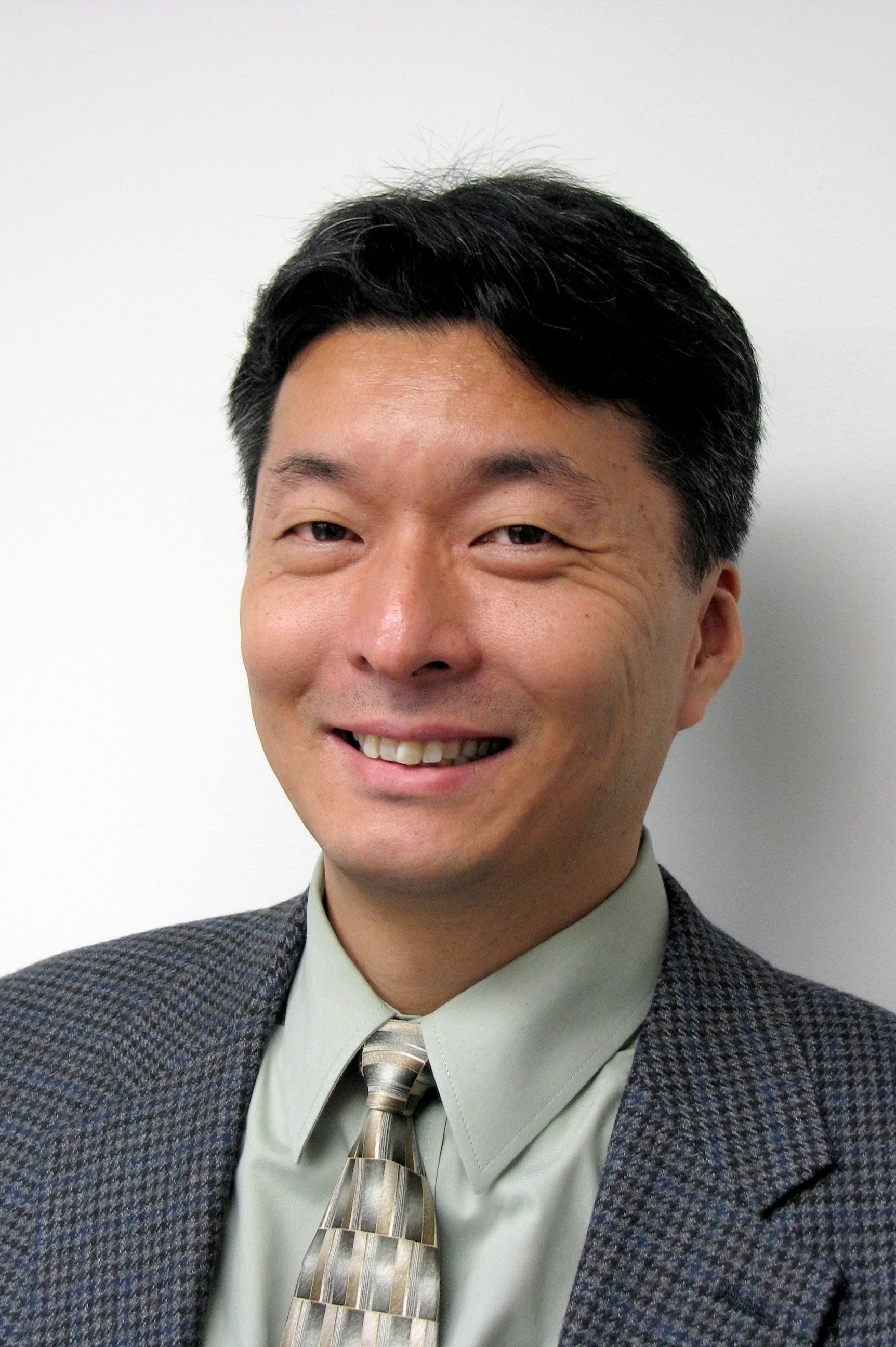 Ichiro Takeuchi (2024–Present): Professor Ichiro Takeuchi was named chair of the Department of Materials Science and Engineering effective May 8, 2025, after leading the department on an interim basis since the previous year.
Ichiro Takeuchi (2024–Present): Professor Ichiro Takeuchi was named chair of the Department of Materials Science and Engineering effective May 8, 2025, after leading the department on an interim basis since the previous year.
He has had a long history with MSE, joining the faculty in 1999, and serving as the director of graduate studies from 2015 to 2024. His research centers around combinatorial high-throughput strategies for materials exploration and discovery, machine learning for materials science, elastocaloric cooling, and superconducting materials and devices.
Among his peers, he is generally recognized as having pioneered combinatorial high-throughput materials strategies as well as elastocaloric cooling. Those achievements have been recognized with the University of Maryland’s Invention of the Year Award (Physical Sciences Category) in 2010 and the Clark School’s Senior Faculty Research Achievement Award in 2018. He was also named a Distinguished Scholar-Teacher in 2018, and is a fellow of the Materials Research Society, American Physical Society, and the Japan Society of Applied Physics.
Currently, he is the Chief Technology Officer of Maryland Energy & Sensor Technologies (MEST), LLC, a start-up dedicated to commercializing elastocaloric cooling technology. He also spent four years with NEC Laboratories in Japan, working on superconducting thin films and devices.
Takeuchi earned a B.S. in physics from the California Institute of Technology in 1987 and a Ph.D. in physics from the University of Maryland in 1996. He was a postdoctoral associate in the Materials Science Division at Lawrence Berkeley National Laboratory from 1996 to 1999. He holds affiliate appointments in the University of Maryland’s Departments of Physics and Electrical and Computer Engineering.
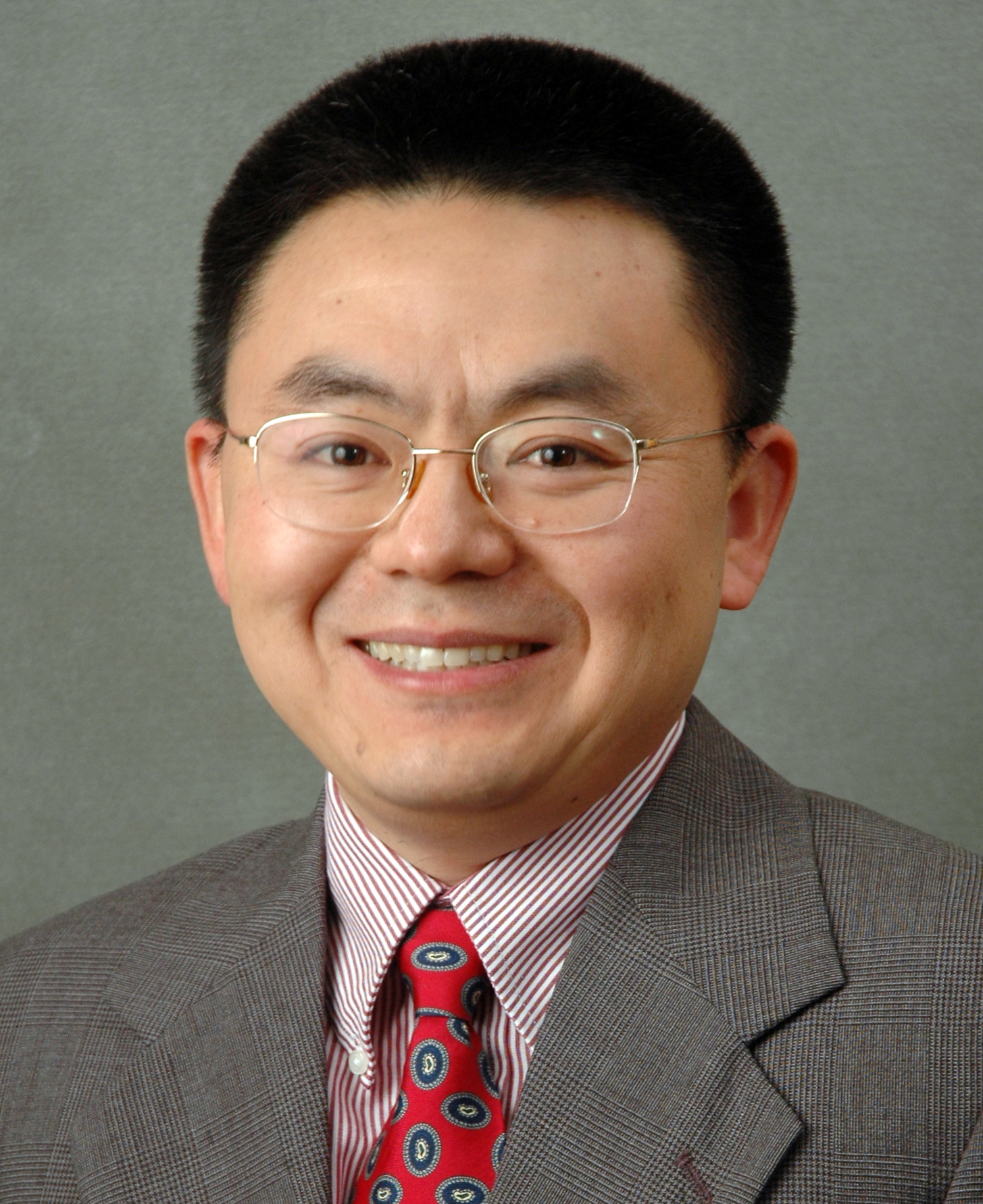 JC Zhao (2019–2024): Professor Ji-Cheng "JC" Zhao joined the UMD Department of Materials Science and Engineering (MSE) as its new Chair on July 1, 2019. Dr. Zhao came to UMD from The Ohio State University (OSU) where he has served as professor and associate chair of research in the Department of Materials Science and Engineering for over 10 years. Prior to his tenure at OSU, Zhao was a materials scientist and project leader at GE Global Research in Schenectady, New York. From 2014 - 2017, he took a leave from OSU to serve as a program director at the Advanced Research Projects Agency-Energy (ARPA-E), returning to OSU in fall, 2017.
JC Zhao (2019–2024): Professor Ji-Cheng "JC" Zhao joined the UMD Department of Materials Science and Engineering (MSE) as its new Chair on July 1, 2019. Dr. Zhao came to UMD from The Ohio State University (OSU) where he has served as professor and associate chair of research in the Department of Materials Science and Engineering for over 10 years. Prior to his tenure at OSU, Zhao was a materials scientist and project leader at GE Global Research in Schenectady, New York. From 2014 - 2017, he took a leave from OSU to serve as a program director at the Advanced Research Projects Agency-Energy (ARPA-E), returning to OSU in fall, 2017.
Currently a Fellow of the American Society of Materials International (ASM) and of the Materials Research Society (MRS), Zhao's research focuses are on high-throughput materials science methodologies, determination of phase diagrams and other materials properties, computational thermodynamics, and design of advanced alloys and coatings.
In addition to many materials innovations, Zhao pioneered the development of a diffusion-multiple approach and co-developed several associated materials property microscopy tools for accelerated materials discovery and development. The invention of ultrafast laser materials property microscopy by the Zhao-Cahill team was recognized as one of eight finalists for the 2018 Berthold Leibinger Innovationspreis - the highest remunerated prizes dedicated to laser technology innovations.
Zhao holds 48 issued U.S. patents and was the 2001 winner of the prestigious Hull Award from GE Global Research with a citation “for his leadership skills in advancing innovative, state-of-the-art development methodologies that aim to decrease cycle time for materials discovery while increasing robustness of the work. He was also recognized for his expertise and leadership regarding the critical nature of coatings and high temperature materials, and for his enormous energy and perseverance in solving real business challenges.” Most recently, Dr. Zhao was elected to serve on the Board of Trustees of ASM International for the 2019-2022 term.
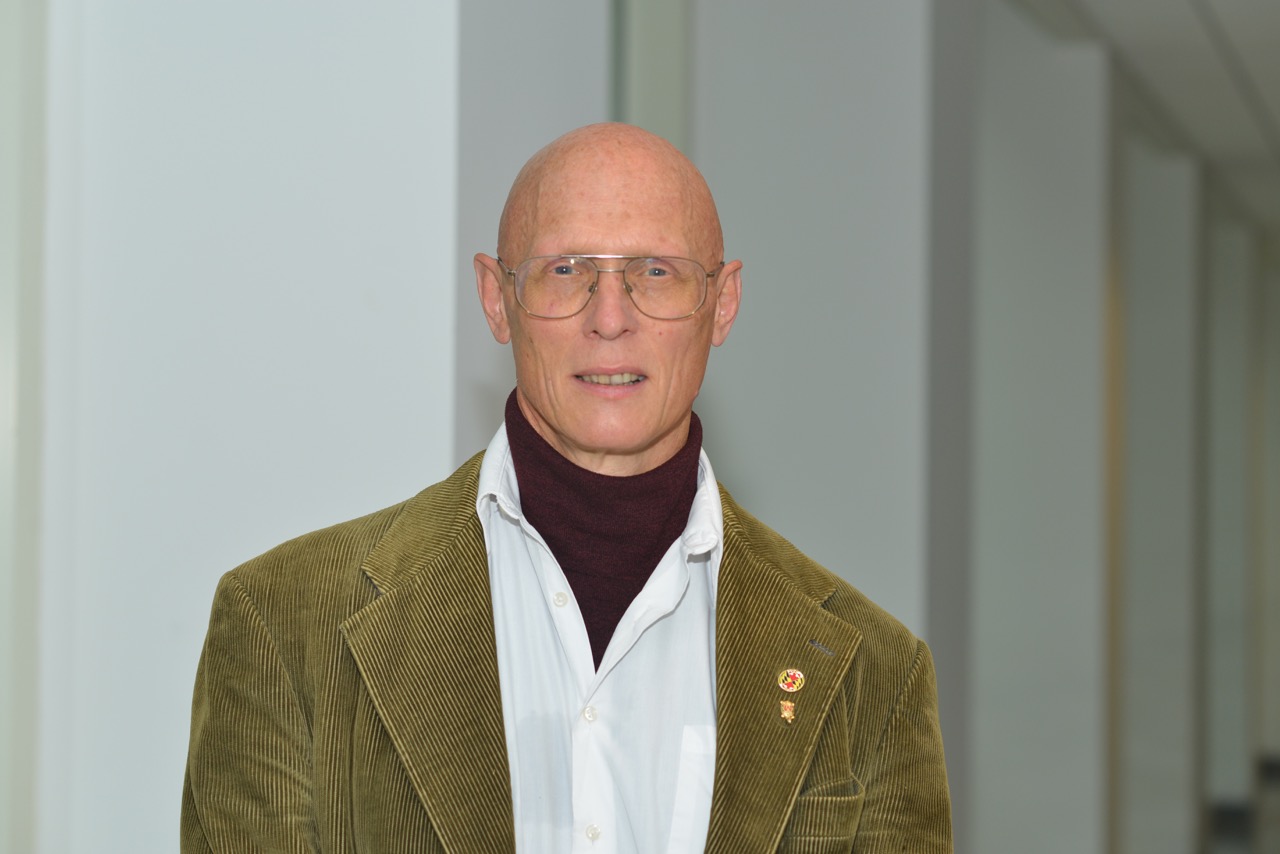 Ray Phaneuf (2015 – 2019): Ray Phaneuf is a Professor and formerly Interim Chair in the Department of Materials Sciences and Engineering at the University of Maryland. He earned his PhD in Physics at the University of Wisconsin-Madison in 1985. He then joined the Physics Department at the University of Maryland, where he used electron diffraction to study phase transformations on stepped Si(111) surfaces, resulting in the identification of a thermodynamically driven faceting associated with the formation of the (7x7) reconstruction. In 1989 he was a visiting scientist with Ernst Bauer’s group in Clausthal, Germany, using low energy electron microscopy (LEEM) to image this faceting in real time. In 2000 he joined the Materials Science and Engineering Department, and began studies of directed self-organization during growth, etching and sublimation on semiconductor, insulator and polymer surfaces, using lithographic patterning as a means of controlling the length scale. He was an original member of the UM NSF-MRSEC. In 2006 he was a visiting professor at the National Nanotechnology Laboratory, in Lecce, Italy. He is the founding director of the Interdisciplinary Minor in Nanoscience and Technology at the UM. He is the author of more than 100 journal articles, and has given over 40 invited talks on his work in the US, Europe and Japan. He was named the Laboratory for Physical Sciences Faculty Researcher of the year in 2002. He was named Interim Chair of MSE in 2015. He also holds affiliate professor positions in Physics and ECE. His current research is in the fields of directing self-assembly of nanostructures at the mesoscale, plasmonics, and the application of nanotechnology to the conservation of cultural heritage.
Ray Phaneuf (2015 – 2019): Ray Phaneuf is a Professor and formerly Interim Chair in the Department of Materials Sciences and Engineering at the University of Maryland. He earned his PhD in Physics at the University of Wisconsin-Madison in 1985. He then joined the Physics Department at the University of Maryland, where he used electron diffraction to study phase transformations on stepped Si(111) surfaces, resulting in the identification of a thermodynamically driven faceting associated with the formation of the (7x7) reconstruction. In 1989 he was a visiting scientist with Ernst Bauer’s group in Clausthal, Germany, using low energy electron microscopy (LEEM) to image this faceting in real time. In 2000 he joined the Materials Science and Engineering Department, and began studies of directed self-organization during growth, etching and sublimation on semiconductor, insulator and polymer surfaces, using lithographic patterning as a means of controlling the length scale. He was an original member of the UM NSF-MRSEC. In 2006 he was a visiting professor at the National Nanotechnology Laboratory, in Lecce, Italy. He is the founding director of the Interdisciplinary Minor in Nanoscience and Technology at the UM. He is the author of more than 100 journal articles, and has given over 40 invited talks on his work in the US, Europe and Japan. He was named the Laboratory for Physical Sciences Faculty Researcher of the year in 2002. He was named Interim Chair of MSE in 2015. He also holds affiliate professor positions in Physics and ECE. His current research is in the fields of directing self-assembly of nanostructures at the mesoscale, plasmonics, and the application of nanotechnology to the conservation of cultural heritage.
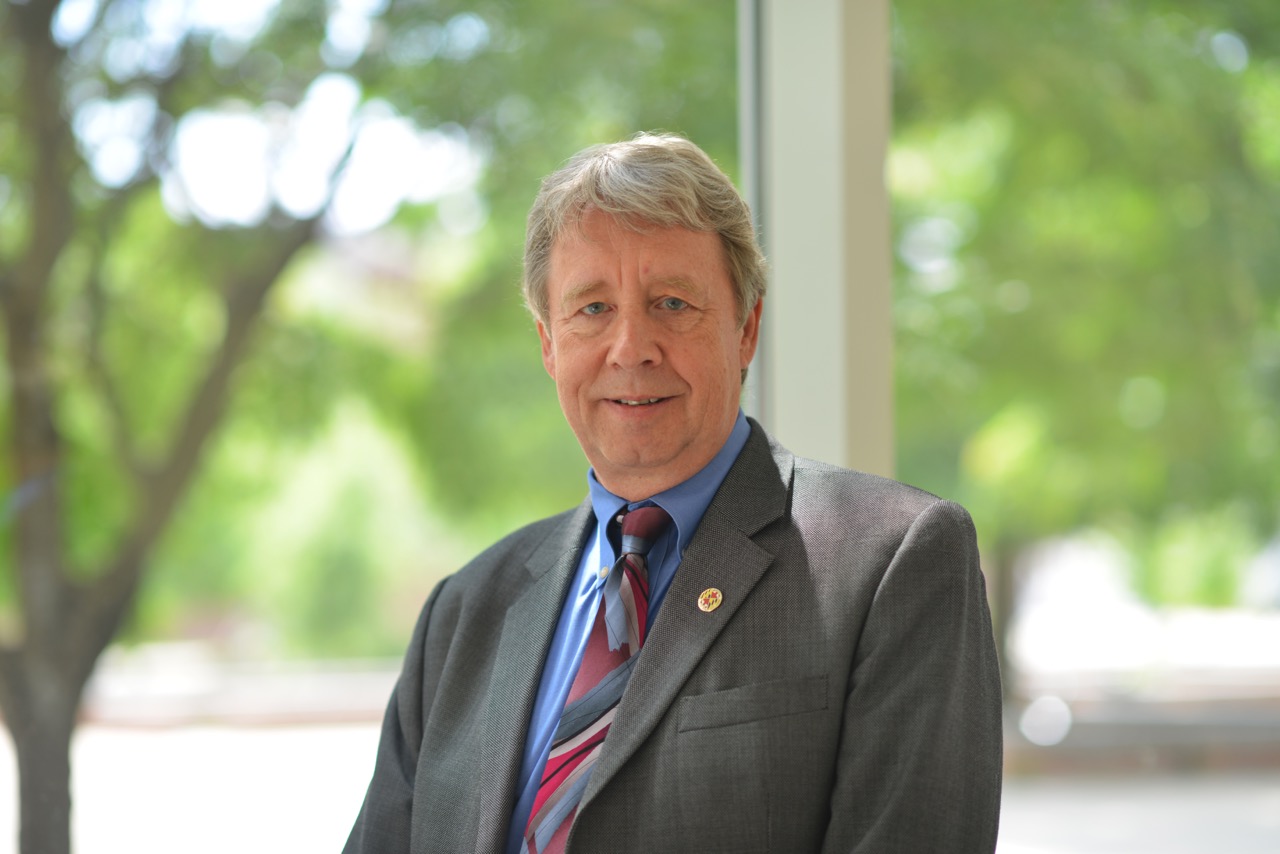 Robert Briber (2003 - 2015): While Robert Briber served as the MSE Chair, the Department saw two successful ABET accreditations, the establishment of the UMD NanoCenter, and UMERC, which was formed primarily by MSE faculty members. A significant expansion of the undergraduate program also took place. Briber is currently Professor of Materials Science and Engineering, and Associate Dean for Research for the A. James Clark School of Engineering at the University of Maryland. He has a B.S. degree in Materials Science and Engineering from Cornell University and a Ph.D. in Polymer Science and Engineering from the University of Massachusetts. After receiving his Ph.D., he went to the National Institute of Standards and Technology (NIST) as a National Research Council Postdoctoral Fellow and then remained at NIST as a staff scientist in the Polymers Division until 1992. Dr. Briber joined the University of Maryland in 1992. He has been the director of UMD High Resolution Neutron Scattering Research Program for the past 20 years, and is an internationally recognized researcher in the field of materials science with a specialization in the physics of polymers and the characterization of soft materials by neutron and X-ray scattering. He is a past President of the Neutron Scattering Society of America, a Fellow of the American Physical Society and the Neutron Scattering Society of America, a recipient of the Department of Commerce Bronze Medal, a former editor of the Journal of Polymer Science –Polymer Physics Edition (published by Wiley-Interscience), a University of Maryland Distinguished Scholar-Teacher and is co-author of over 100 scientific papers published in peer-reviewed research journals including articles in Nature, Science, Physical Review Letters, Applied Physics Letters, Journal of the American Chemical Society, Biophysical Journal and the Journal of Molecular Biology. His work has been cited over 3000 times and he has an h-index of 32. He teaches the class “Materials of Civilization”, an I-Series and a University of Maryland Marquee Science and Technology course.
Robert Briber (2003 - 2015): While Robert Briber served as the MSE Chair, the Department saw two successful ABET accreditations, the establishment of the UMD NanoCenter, and UMERC, which was formed primarily by MSE faculty members. A significant expansion of the undergraduate program also took place. Briber is currently Professor of Materials Science and Engineering, and Associate Dean for Research for the A. James Clark School of Engineering at the University of Maryland. He has a B.S. degree in Materials Science and Engineering from Cornell University and a Ph.D. in Polymer Science and Engineering from the University of Massachusetts. After receiving his Ph.D., he went to the National Institute of Standards and Technology (NIST) as a National Research Council Postdoctoral Fellow and then remained at NIST as a staff scientist in the Polymers Division until 1992. Dr. Briber joined the University of Maryland in 1992. He has been the director of UMD High Resolution Neutron Scattering Research Program for the past 20 years, and is an internationally recognized researcher in the field of materials science with a specialization in the physics of polymers and the characterization of soft materials by neutron and X-ray scattering. He is a past President of the Neutron Scattering Society of America, a Fellow of the American Physical Society and the Neutron Scattering Society of America, a recipient of the Department of Commerce Bronze Medal, a former editor of the Journal of Polymer Science –Polymer Physics Edition (published by Wiley-Interscience), a University of Maryland Distinguished Scholar-Teacher and is co-author of over 100 scientific papers published in peer-reviewed research journals including articles in Nature, Science, Physical Review Letters, Applied Physics Letters, Journal of the American Chemical Society, Biophysical Journal and the Journal of Molecular Biology. His work has been cited over 3000 times and he has an h-index of 32. He teaches the class “Materials of Civilization”, an I-Series and a University of Maryland Marquee Science and Technology course.
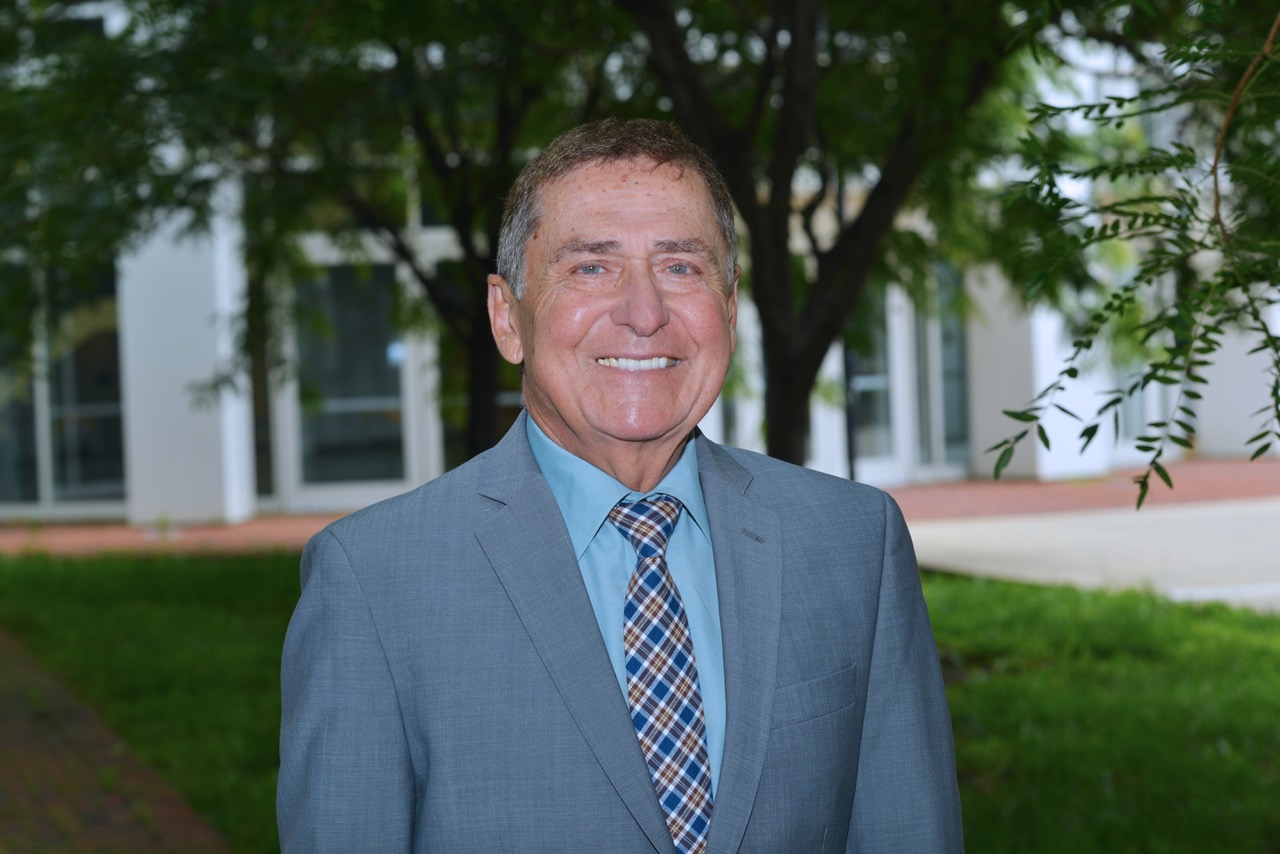 Aris Christou (1992 -2003): Professor Aris Christou was the Chairman of the University of Maryland, Materials Science and Nuclear Engineering Departments (until July 2003), and presently holds professorial appointments in the Department of Materials Science and Engineering and Mechanical Engineering. Prof. Christou received his Ph.D. in Materials Science from the University of Pennsylvania in 1971. He presently conducts research in compound semiconductor materials and process science, radiation effects in materials and devices, manufacturing science, and reliability. From 2000-2003, Dr. Christou was the Director of the NSF Center COEDIP, the Center of OptoElectronic Devices, Interconnects and Packaging. Dr. Christou was previously a Professor of Electronic Materials at Rutgers University, and research scientist at the Naval Research Laboratory. He has authored two books and has been the editor of three others. Dr. Christou has more than 150 publications in archival journals and 14 patents (including two pending), and has organized international conferences in GaAs devices, materials and reliability. Dr. Christou is a Fellow of the IEEE, a Fullbright Fellow, a recipient of the DoD-Berman Publication Awards, and an IEEE Guest Lecturer. Professor Christou was the 2004 recipient of the INEER Achievement Award (International Network for Engineering Education and Research) for achievements in international education and research in engineering, as well as the recipient of the 2007 ASM International Burgess Memorial Award "For his seminal scientific contributions in the field of electronic materials, packaging and devices." Professor Christou is a member of APS, ASM, TMS and MRS, was the past President of the Federation of Materials Societies from 2004-6, and is presently a member of the FMS Board of Trustees. Professor Christou was awarded the Fullbright Fellowship in 1985, which he utilized to establish molecular beam epitaxy research programs in Greece. In 1986, he established reliability programs in both Italy and Greece. These programs were established under the auspice of the NATO Scientific Affairs Committee for Southern European Stability, a committee in which he was a member in 1986-1987. In 1981, he was awarded the UNESCO Scientific Affairs Service Commendation for his work in training international scientists in applying electron microprobe techniques to geological exploration. In 1987, he was awarded the University of Bologna Millenium Medal celebrating scholarly contributions during the 1000 year anniversary of the University. From 1978-1990, Professor Christou received five different awards for Outstanding Performance from the Navy crediting him with inventions in mixer detector diodes, thin film interconnects and for the development of reliable solid state phased array radar devices.
Aris Christou (1992 -2003): Professor Aris Christou was the Chairman of the University of Maryland, Materials Science and Nuclear Engineering Departments (until July 2003), and presently holds professorial appointments in the Department of Materials Science and Engineering and Mechanical Engineering. Prof. Christou received his Ph.D. in Materials Science from the University of Pennsylvania in 1971. He presently conducts research in compound semiconductor materials and process science, radiation effects in materials and devices, manufacturing science, and reliability. From 2000-2003, Dr. Christou was the Director of the NSF Center COEDIP, the Center of OptoElectronic Devices, Interconnects and Packaging. Dr. Christou was previously a Professor of Electronic Materials at Rutgers University, and research scientist at the Naval Research Laboratory. He has authored two books and has been the editor of three others. Dr. Christou has more than 150 publications in archival journals and 14 patents (including two pending), and has organized international conferences in GaAs devices, materials and reliability. Dr. Christou is a Fellow of the IEEE, a Fullbright Fellow, a recipient of the DoD-Berman Publication Awards, and an IEEE Guest Lecturer. Professor Christou was the 2004 recipient of the INEER Achievement Award (International Network for Engineering Education and Research) for achievements in international education and research in engineering, as well as the recipient of the 2007 ASM International Burgess Memorial Award "For his seminal scientific contributions in the field of electronic materials, packaging and devices." Professor Christou is a member of APS, ASM, TMS and MRS, was the past President of the Federation of Materials Societies from 2004-6, and is presently a member of the FMS Board of Trustees. Professor Christou was awarded the Fullbright Fellowship in 1985, which he utilized to establish molecular beam epitaxy research programs in Greece. In 1986, he established reliability programs in both Italy and Greece. These programs were established under the auspice of the NATO Scientific Affairs Committee for Southern European Stability, a committee in which he was a member in 1986-1987. In 1981, he was awarded the UNESCO Scientific Affairs Service Commendation for his work in training international scientists in applying electron microprobe techniques to geological exploration. In 1987, he was awarded the University of Bologna Millenium Medal celebrating scholarly contributions during the 1000 year anniversary of the University. From 1978-1990, Professor Christou received five different awards for Outstanding Performance from the Navy crediting him with inventions in mixer detector diodes, thin film interconnects and for the development of reliable solid state phased array radar devices.
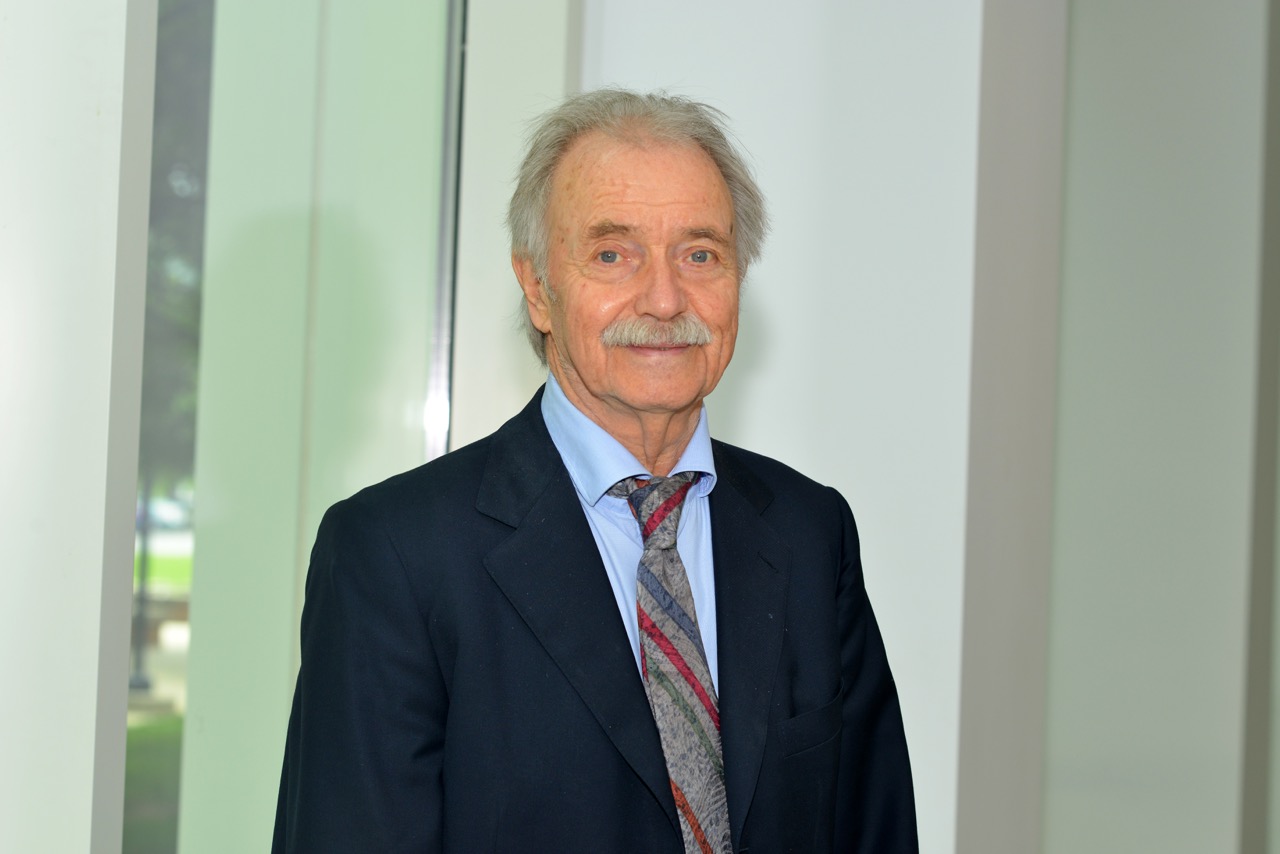 Manfred Wuttig (Director, 1986-1989; Chair, 1990-1992): Professor Wuttig is an internationally recognized expert in the fields of ferromagnetic, ferroelectric and ferroelastic materials; reversible phase transformations, mutiferroics, magnetoelectrics, and nanomagnetism. Before coming to Maryland, Professor Wuttig was a physics lecturer at the Gauss Ingenieur Schule, Berlin, a research associate at the Physikalisch-Technische Bundesanstalt, Berlin; ; an assistant research professor in the Department of Metallurgy at the University of Illinois, full professor at the University of Missouri–Rolla; and Director of the National Science Foundation's Metallurgy Program. He joined the University of Maryland's then-Department of Chemical and Nuclear Engineering in 1986, where he was the director of the Graduate Program in Materials Science, and in 1992 became the first Acting Chair of the then-Department of Materials and Nuclear Engineering. He has served as MSE's graduate program director since the late 1990s. Professor Wuttig's research projects include the synthesis and characterization of magnetoelectric composites, organic multiferroics for spintronics, and the study of alloys with magnetostrictive properties. He has also been involved in the development of an all solid-state, elastocaloric cooling technology based on latent heat generated by the martensitic transition (change in crystal structure) of shape memory alloys, for which he, Takeuchi and Cui won the University of Maryland's Physical Sciences Invention of the Year in 2011. The highly-efficient system could potentially replace vapor-compression based air conditioners and refrigerators, which utilize hydroflourocarbons and hydro flourochlorocarbons (such as Freon) that are harmful to the environment.
Manfred Wuttig (Director, 1986-1989; Chair, 1990-1992): Professor Wuttig is an internationally recognized expert in the fields of ferromagnetic, ferroelectric and ferroelastic materials; reversible phase transformations, mutiferroics, magnetoelectrics, and nanomagnetism. Before coming to Maryland, Professor Wuttig was a physics lecturer at the Gauss Ingenieur Schule, Berlin, a research associate at the Physikalisch-Technische Bundesanstalt, Berlin; ; an assistant research professor in the Department of Metallurgy at the University of Illinois, full professor at the University of Missouri–Rolla; and Director of the National Science Foundation's Metallurgy Program. He joined the University of Maryland's then-Department of Chemical and Nuclear Engineering in 1986, where he was the director of the Graduate Program in Materials Science, and in 1992 became the first Acting Chair of the then-Department of Materials and Nuclear Engineering. He has served as MSE's graduate program director since the late 1990s. Professor Wuttig's research projects include the synthesis and characterization of magnetoelectric composites, organic multiferroics for spintronics, and the study of alloys with magnetostrictive properties. He has also been involved in the development of an all solid-state, elastocaloric cooling technology based on latent heat generated by the martensitic transition (change in crystal structure) of shape memory alloys, for which he, Takeuchi and Cui won the University of Maryland's Physical Sciences Invention of the Year in 2011. The highly-efficient system could potentially replace vapor-compression based air conditioners and refrigerators, which utilize hydroflourocarbons and hydro flourochlorocarbons (such as Freon) that are harmful to the environment.
John D Hoffman (Director, 1982-1985) John D “Jack” Hoffman received a B.S. in chemistry from Franklin & Marshall College in 1942. He served in the U.S. Army during World War II, and was posted to the Special Engineer Detachment at the Clinton Engineer Works in Oak Ridge, Tennessee as part of the Manhattan Project. In 1944, he was involved in an investigation of a prototype for liquid thermal diffusion of uranium at the Philadelphia Navy Yard. During this investigation a 600-pound cylinder of highly corrosive uranium hexafluoride exploded, rupturing steam pipes; the steam reacted with the uranium hexafluoride to create hydrofluoric acid. Hoffman ran through the cloud of HF gas to rescue Private Arnold Kramish and two civilians. He subsequently received the Soldier's Medal, the United States Army's highest award for valor in a non-combat situation. He received his PhD from Princeton University, in 1949 on "The Dielectric Properties of Long Chain Compounds". He worked at General Electric as a researcher from 1949 to 1954, and then joined the National Bureau of Standards (later NIST) as a research chemist. He became the chief of the Dielectrics Section in 1957, and of the Polymers Division in 1964. In 1967, he became the director of the Institute for Materials Research. Finally, in 1978, he became the Director of the National Measurement Laboratory. He was awarded the Department of Commerce Gold Medal in 1965, the Samuel Wesley Stratton Award of the National Bureau of Standards in 1967 and the Presidential Rank Award of Meritorious Executive. He retired from the Bureau of Standards in 1982. He was a professor and Director of the Engineering Materials Progam in the Department of Chemical and Nuclear Engineering at the University of Maryland from 1982 to 1985. He subsequently left to become the Director of the Michigan Molecular Institute. In 1990, he became Professor of Materials Science and Engineering at Johns Hopkins University. He published more than 60 scientific papers. He is remembered as the creator of Hoffman nucleation theory, and Hoffman-Weeks plots. Hoffman died from congestive heart failure at George Washington University Hospital in 2004
Ian Spain (Director, 1971 -1978): Ian Spain received his B.S. Physics in 1961 and his Ph.D. in 1964 from Imperial College, London University. Professor Spain was a recipient of the Rudolph Lessing Medal of Imperial College in 1964, awarded for ‘Original work of exceptional merit in the field of chemical engineering and chemical technology’. He was a Fellow of the Institute of Physics in the U.K. and was North American Editor for Contemporary Physics. Besides his permanent academic positions, Ian Spain had several visiting appointments. These included stays at the Max Planck Institut fur Festkorperforschung in Stuttgart, Germany, the Royal Radar Establishment in Malvern, England, and the Centre d’Etudes Nucleaires in Grenoble, France. Ian Spain joined UMD faculty in 1966, worked on high-pressure research with the Institute of Molecular Physics, before joining the Dept. of Chemical Engineering in 1971. Professor Spain’s research interests were phase transitions, structural and electronic properties of matter at very high pressures, the development of high pressure techniques, and the physics of carbon and related materials. His expertise in these fields is reflected in more than 120 research papers and two books. From 1979 until his death, he was Professor of Physics at Colorado State University. Professor Spain died at the age of 50 on September 6, 1990, in Fort Collins, Colorado after a two year struggle with cancer.
Richard Arsenault (Director, 1969-1970; 1979-1980) Dr. Richard J. Arsenault received his BS in Metallurgy from Michigan Technical University in 1957, and his PhD in Metallurgy from Northwestern University in 1962. He then joined Oak Ridge National Laboratories as a research scientist. In 1967, he joined the faculty of the University of Maryland the Engineering Materials program in the Department of Mechanical Engineering, and subsequently in the Department of Chemical Engineering. Dr. Arsenault research was concentrated on the mechanical behavior development in metal alloys and composites. He published more than 250 scientific articles, as well as two books, “Metal Matrix Composite: Strengthening Mechanisms”, and ”Strengthening of NiAl Matrix Composites”, and was recognized in 2010 as being among the 250 most highly cited authors in their discipline over the past three decades by Thomson Reuters' ISIHighlyCited.com web site, which noted that these authors represent the researchers "who have contributed to the progress of science through their insight and accomplishments." He served as editor for nine others. He was elected a fellow of TMS in 1998 and served on the US Air Force Scientific Advisory Board for many years.
Ronald Armstrong (Director, 1968-1969): Ron Armstrong received his PhD in Metallurgical Engineering from Carnegie Mellon University, where he was a George Westinghouse Fellow, in 1958. In 1959 he was a Postdoc at LEEDS University, followed by numerous visiting research positions with industrial and government laboratories in the United States and overseas. In 1968 he joined the Mechanical Engineering Department and the Engineering Materials Program as Director. His principal research activities with students and colleagues have included: studies of polycrystalline material strength properties, microstructural aspects of fracture mechanics properties, crystal perfection and initiation of detonation in energetic materials, and development of constitutive relations for material dynamics calculations. In 1998 he became Founding Director of the Center for Energetic Concepts Development, a Cooperative Agreement between the UMD and the Indian Head Division of the Naval Surface Warfare Center. He became Emeritus Professor in 1999. From 2000 to 2003 he was a Senior Scientist in the Energetic Materials Branch, Munitions Directorate at Eglin Air Force Base. He was the recipient of the AIME Robert Lansing Hardy Gold Medal for 1962 and the 2015 winner of the DYMAT John Rinehart award. He was a Senior Fulbright Hays Fellow, New Zealand, 1974; NATO Advanced Study Institute Lecturer, England 1979, Crete 1985; Liaison Scientist, Office of Naval Research London, UK 1982 1984, 1991; Visiting Research Fellow, now Life Member, Clare Hall, Univ. Cambridge, UK, 1984. He was elected a Fellow of American Society for Metals in 1985. Armstrong was a pioneering in predicting in 1970 that an order of magnitude increase in the strength would be achieved for ultrafine grain size materials, now with such strength levels being routinely achieved for metals and alloys as part of the engineering surge in nanotechnology.
Top